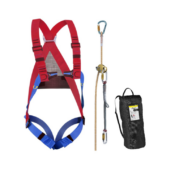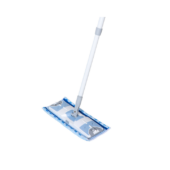Not all procurement is easy. Supplier onboarding risk, procurement policy compliance, and rogue spending are all dangers finance and procurement departments must avoid. If these problems keep you up at night, Intake-to-Procure technology may be the simple solution.
Modern procurement uses intake-to-procure to capture unmanaged spend and lead employees through purchase approval. Integration with existing systems and procedures provides a single front door for all procurement requirements, from purchases to contracts.
Want to know more? Jump in!
Intake-to-Procure
Intake-to-Procure solutions centralise employee procurement request, approval, and collaboration. This one-stop shop allows procurement, IT, controllers, security, legal, and executive teams to collaborate and approve. Intake-to-Procure lets companies complete their procurement processes.
Finance and procurement are always overworked. Employees must be able to evaluate, monitor, and approve purchase requests without manual intervention now more than ever.
Prior to Intake-to-Procure, procurement was delayed and choppy. Automation lets all employees participate in the intake process and see their requests through to approval while maintaining compliance.
An Intake-to-Procure Solution Benefits
Today, many procurement organisations use procure-to-pay or contract lifecycle management to handle purchase requests. These systems are difficult to use and adapt, especially for procurement players. Cross-functional approvals complicate matters.
Zip Report surveyed 1,056 U.S. finance and accounting professionals:
For new software or vendor purchases, over half of firms need 6 or more cross-functional approvals.
32% of finance and accounting professionals say new purchase requests take 3 weeks or more to approve.
At their organisation, 57.7% of respondents make more than 50 B2B software or service acquisition requests per month.
48.4% of CEOs said their organisation needs six or more approvals for new software or vendor purchases.
32% of leaders reported approval takes 3 weeks or more.
For 27.1 percent of respondents, their organisation requires more than 10 approvals for new software or vendor purchases.
Procurement intake solutions accelerate employee adoption, efficiency, supplier risk reduction, and spend control by combining fragmented request and approval procedures.
Enhanced employee adoption
All employees can use the same procurement front door with an Intake-to-Procure solution. A brief and straightforward presentation makes information more accessible. More employees on the platform improves oversight.
An optimised user experience can help your procurement staff capture more spend. Employees will have more compliance agency and buy-in from companies.
In starting use scenarios, intake can increase spend under supervision by 80% or push the conventional ceiling of 60%–70% to 90%+.
Considering a 9% savings for every new dollar under procurement control, focusing on adoption might save tens of millions. It changes the game quantitatively.
More efficient operations
Knowing Intake-to-Procure’s automated systems are working lets procurement teams rest. Intake-to-Procure monitors and flags concerns throughout. It lets workers concentrate on other needs.
Companies run smoothly and quickly using Intake-to-Procure. One platform handles vendor onboarding, approval, monitoring, risk management, IT, and security checks. The procurement procedure is strong and healthy.
Zip helped Patreon cut approval cycle times by 50%.
Reduced business risk
Intake-to-Procure indicates dangerous circumstances. You can trust Intake-to-Procure to monitor your organisation from contract to delivery. increased staff using the platforms allows for increased process supervision and hybrid procurement arrangements.
Controlled spending
Better efficiency and lower risk through Intake-to-Procure improve budgetary results. Intake-to-Procure solutions route requests to preferred vendors, letting firms choose who best meets their budgetary goals. The automated Intake-to-Procure processes yield turnkey results.
In his Margin Makers email, Zip Head of Research Nick Heinzmann stated, “the earlier you get involved in spending, the more you influence the spend.” We agree.
Intake-to-Procure Solution Highlights
Many companies prioritise compliance in procurement. The stakeholder user experience of vendor onboarding and procurement intake suffers, hurting the organisation.
Intake-to-Procure streamlines procurement intake, vendor onboarding, and cross-functional approval to one view. Companies can optimise procurement using tangible KPIs from automation. Everyone has an amazing time when it all comes together.
An Intake-to-Procure solution provides:
One entry point for all requests simplifies adoption
The single procurement input front door in intake-to-procure solutions reduces purchase request cycle times. A simple interface for employees to submit procurement requests—purchases, contracts, renewals, or vendors—reduces uncertainty and friction, making the process more enjoyable for everyone.
Cooperation approvals
Bottlenecks usually disappear fast in transparent, collaborative procedures that show requesters and approvers progress and status. Everyone knows what to do to move things forward if not.
Compatible with P2P and ERP
Intake-to-Procure technology’s seamless interaction with P2P and ERP systems like Netsuite allows approved requests to be transformed into purchase orders or contracts without user involvement, which is crucial. System integration ensures data quality and accuracy by synchronising and reconciling data.
Management of vendors
Having a single source of truth simplifies vendor management. An Intake-to-Procure platform centralises vendor data and simplifies data collecting, making supply chain and vendor management easy.
Automated renewal workflows
Alerts! The Intake-to-Procure application may notify vendors of renewal deadlines and automate renewal workflows with comprehensive vendor data, saving time, money, and headaches.
Spending analytics
One procurement solution gives you early visibility into spend and trends. These insights can help you cut cycle times, optimise budgets, consolidate vendors, and other lifecycle efficiencies. It’s limitless with robust customisable data aggregation.
Workflows with AI
Given the continuous evolution of technology, AI-integration is essential for expediting procurement operations.
Understand Procure-to-Pay vs. Intake-to-Pay Terminology
Confusion ensues with Procure-to-Pay, Intake-to-Pay, and Intake-to-Procure! These terms have diverse meanings and ramifications for procurement professionals and organisations.
Make it basic and understandable.
Procure-to-Pay
Executing and paying for accepted orders is called Procure-to-Pay (P2P). Purchase orders, receiving, invoicing, and payment are covered.
P2P’s key benefit is improving order execution and payment efficiency and accuracy, decreasing errors, delays, and expenses.
P2P doesn’t address upstream procurement operations including identifying needs, confirming requests, gaining permissions, and sourcing vendors, which is its main drawback.
P2P presume purchase requests have been approved and meet procurement policies and budgets. However, many procurement requests are made by non-procurement staff who may not follow procurement regulations or have authorization. Compliance oversight failure leads to mismanaged spend, non-compliant purchases, and missed savings possibilities.
From Intake to Procurement
Intake-to-Procure (I2P) captures and manages procurement requests from need to purchase order or contract.
I2P encompasses upstream procurement tasks such needs assessment, request validation, approvals, and vendor sourcing. Software like Zip supports I2P and integrates with P2P and ERP systems.
Original intake is the most significant and impactful component of procurement, hence Intake-to-Pay highlights it. By early involvement in procurement requests and giving advise and recommendations to maximise opportunity, I2P may help procurement teams influence and optimise spend.
From Intake to Payment
Intake-to-Pay (I2P) captures and manages procurement requests from need to payment.
I2P includes POs, invoicing, and payment, as well as upstream and downstream procurement activities. By centralising the procurement chain, insights, visibility, and collaboration can be maximised, enhancing employee engagement and satisfaction.
However, business and larger organisations with many systems and workflows may need more work to establish, maintain, and train. Fortunately, Zip’s full-suite Intake-to-Pay solution simplifies procurement for your organisation.
From Intake to Purchase
Procurement intake involves multiple repetitive steps. Automated Intake-to-Procure tools streamline procedures.
Your organisation may implement an Intake-to-Procure solution like this:
Create a dynamic, complete intake form.
Depending on the request type and category, this intake form should ask different questions. The vendor name, nature of work, desired result, ideal completion dates, budget, contact points, and important approval stakeholders should be included.
Create a purchase request approval sequence to complete the procedure.
Each purchase request’s approval procedure should include the chain of approval, criteria, and actions. The workflow should be transparent and collaborative, allowing requesters and approvers to track request progress and status.
Distribute duties to team members to attract stakeholders.
The necessary stakeholders must be assigned duties to keep the process moving. Intake-to-Procure software like Zip automates contacting stakeholders and staff, setting deadlines and alerts, allowing comments and real-time feedback, and assuring transparency.
Align the team on any specifics or questions to ensure agreement.
Make sure everyone can observe the process and raise questions regarding the request to keep things moving. Most of your team should have the information they need to move forward when using an Intake-to-Procure platform’s centralised ‘single source of truth’.
Confirm the process launch and notify stakeholders with executive support.
Key executives, the vendor(s), the finance team, and the legal team have been informed of the request. Nothing should surprise you when this process is done right.
Check intake processes for risk, permissions, and obstacles.
Risk and barriers can occur, so watch them. A sophisticated approval management system can track, manage, and update approvals and detect compliance issues before they become issues.
Finish and examine the results.
Finally, evaluate the process’s efficacy. Intake-to-Procure platforms can provide extensive results and summaries to confirm the request’s success and tell your team of what worked, didn’t, and should be improved.
Intake-to-Procure Benefits Each Department
Let’s examine how Intake-to-Procure benefits each department.
Procurement
- Long approval processes, lack of visibility, superfluous processes, and confused end-users make procurement departments a source of friction. Because procurement is “just easier,” many employees avoid it.
- One procurement system, Intake-to-Procure, helps requesters receive items faster and for more value. It produces happy workers who eventually ‘buy-in’ to procurement.
- With Intake-to-Procure, procurement departments can focus on strategic goals and demonstrate their worth.
Finance
- Before Intake-to-Procure, finance departments had no procurement visibility or control. Employee procurement errors ruin budget estimates and increase audit risks.
- Intake-to-Procure centralises spend, giving finance channels and reporting capabilities regardless of size, type, or demand. Finance can improve cost control and planning with tighter budgets.
- Finance can oversee tighter budgets and eliminate rogue spend using Intake-to-Procure.
IT
- IT departments lack bandwidth and are overworked. Their main concern is software proliferation. IT departments usually handle procurement afterward due to these difficulties.
- Intake-to-Procure eliminates shadow IT spend, improving budgets and time management for IT teams. With management of all functions, IT may be involved earlier in software needs, improving predictability and foresight.
Security
- Data security professionals cannot see vendor onboarding workflows due to manual methods. This results in unapproved purchases and no audit trails.
- Intake-to-Procure automates security and minimises questionnaire review time. Digitalization boosts security and compliance. It streamlines operations, freeing up time for other security issues.
- Security departments may now find data and strategic value in procurement with Intake-to-Procure.
Legal
- Legal may feel that they’re only involved in emergencies. Legal departments employ CLM and GRC tools but are puzzled by older systems.
- Starting procurement intake with legal gives legal enough time to analyse materials and eliminates last-minute evaluations. Linking CLM technologies lets firms find legacy contracts using Intake-to-Procure. Like a GRC tool, these requests can undergo security evaluations to reduce risk.
- Intake-to-Procure reduces risk and lets legal oversee suppliers and approvals from the outset, minimising headache-causing haste.
What procurement KPIs does Intake-to-Procure affect?
The main procurement KPIs are quality, delivery, and cost-savings. Intake-to-Procure quantifies, measures, and improves all three. Dig in.
Quality KPIs
- Intake-to-Procure tracks vendors throughout. It strengthens supplier connections by using only approved or certified vendors.
- Supplier performance is continuously assessed because suppliers are monitored and cannot auto-renew contracts.
Delivery KPIs
- By automating vendor approvals, Intake-to-Procure greatly reduces supplier lead time.
- Intake-to-Procure speeds up end-to-end ordering.
- Intake-to-Procure reduces emergency orders with stakeholder supervision.
KPIs that save money
- Preferred suppliers enable supply-base consolidation with Intake-to-Procure automation.
- Intake-to-Procure optimises budgets by controlling cost.
- Better ROI will result from more stakeholders adopting procurement due to its effectiveness.
Quality, delivery, and cost-saving KPIs from Intake-to-Procure will make organisations healthier.

















